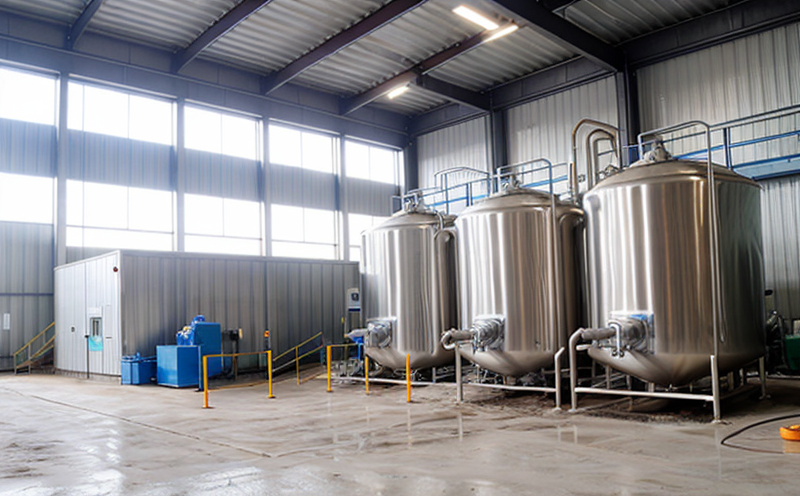ISO 11885 ICP OES Metals Test in Process Water
The ISO 11885:2016 standard provides a robust framework for the Inductively Coupled Plasma Optical Emission Spectroscopy (ICP-OES) analysis of metals in industrial process waters. This testing is essential in various sectors, including manufacturing, chemical processing, and pharmaceuticals, where maintaining water quality is critical to operational efficiency and compliance with international standards.
Our ISO 11885 ICP OES Metals Test service ensures precision measurement of metal concentrations in industrial process water. By adhering strictly to the ISO standard, we provide reliable data that can be used for quality control, R&D, and regulatory compliance. This testing is particularly important where trace metals may affect product quality, safety, or environmental impact.
Our team uses state-of-the-art ICP-OES instrumentation capable of detecting metal ions at parts-per-billion (ppb) levels. The test process involves several key steps: sample preparation, dilution if necessary, and then analysis via the ICP-OES instrument. Compliance with ISO 11885 ensures accurate and consistent results across multiple batches or samples.
Our testing service is designed for industries that require precision in monitoring metals like copper, zinc, nickel, iron, lead, cadmium, and other elements commonly found in process waters. This level of detail allows clients to make informed decisions about water treatment processes and chemical usage, ultimately leading to more efficient operations and reduced environmental impact.
The importance of this testing cannot be overstated, especially for industries that rely heavily on clean and consistent water supplies. By ensuring the absence or acceptable levels of metals in process waters, we help prevent equipment corrosion, improve product quality, and safeguard worker health and safety.
Scope and Methodology
| Step | Description |
|---|---|
| Sampling | Collection of representative samples from various points in the process water system, ensuring a comprehensive analysis. |
| Dilution | If necessary, diluting samples to ensure they fall within the linear range of the ICP-OES instrument for accurate measurement. |
| Preparation | Chemical digestion or other methods to prepare samples for analysis by ICP-OES. |
| Analysis | Analyzing prepared samples using an ICP-OES spectrometer, which measures the emission of light from metal ions in solution at specific wavelengths. |
| Data Interpretation | Interpreting results against ISO 11885 acceptance criteria to determine compliance and identify any necessary corrective actions. |
Quality and Reliability Assurance
- Use of calibrated and certified ICP-OES instruments.
- Ongoing calibration checks to ensure instrument accuracy.
- Sophisticated software for data analysis and reporting.
- Compliance with ISO 11885:2016 standards.
The reliability of our testing is further enhanced by our experienced technicians who have extensive knowledge in water chemistry and ICP-OES techniques. Our commitment to quality ensures that every test result is accurate, reproducible, and traceable back to the original sample collection.
Why It Matters
The metals present in industrial process waters can have significant implications for both operational efficiency and environmental impact. Metals like copper and zinc are essential in many industrial processes, but their presence at levels above acceptable limits can lead to corrosion of equipment, contamination of products, and health risks for workers.
Lead, cadmium, and mercury are particularly hazardous due to their toxicity even in trace amounts. Proper monitoring through ISO 11885 ICP OES testing ensures that these metals do not reach levels that could be harmful or lead to operational issues. By adhering to this standard, we help our clients maintain a safe work environment while also minimizing the environmental footprint of industrial processes.
The precision and reliability provided by ISO 11885 ICP OES testing are critical for industries where water quality directly affects product quality. For example, in pharmaceutical manufacturing, even trace amounts of metals can contaminate products, leading to recalls or other costly issues. Our service helps ensure that these risks are minimized, allowing clients to focus on innovation and growth.





